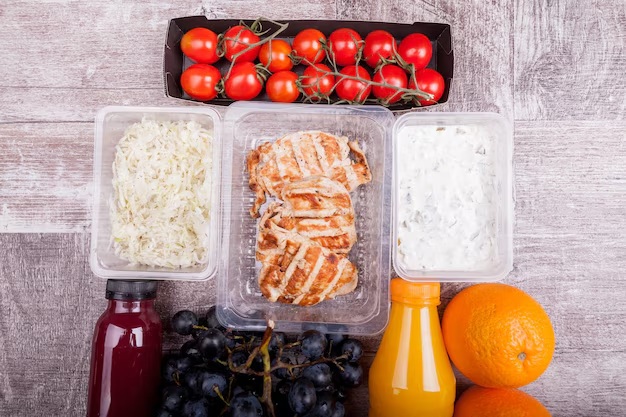Keep Your Fruit Fresh: Mastering Refrigerator Storage 🍎🍌
Have you ever bought a fresh batch of fruits only to find them wilted and mushy a few days later? Keeping fruit fresh in the refrigerator might seem like a mysterious art, but with the right tips and knowledge, you can maximize their shelf life and enjoy them at their peak ripeness. This guide will explore essential strategies to keep your fruit fresh, provide practical storage tips, and delve into related aspects of food storage that enhance your kitchen know-how.
Understanding Fruit Preservation
The Science of Fruit Ripening 🧪
Fruit ripening is a natural process influenced by ethylene gas, a plant hormone released by many fruits. While this process enhances flavor and texture, it also leads to over-ripening if left unchecked. Understanding this mechanism helps you strategically store fruit to manage ripening and prevent spoilage.
Temperature Is Key ❄️
Cold temperatures slow down the activity of ethylene gas, so keeping fruits in the refrigerator can significantly extend their freshness. However, not all fruits benefit from refrigeration. Balancing temperature requirements with humidity control is crucial for preserving flavor and texture.
Storing Fruits in the Refrigerator
General Tips for Fruit Storage
- Sort and Check: Regularly sort through your fruit stash to remove any spoiled ones. Decaying fruit can distribute ethylene gas and hasten the ripening of others.
- Separate Ethylene Producers: Store high ethylene-producing fruits like bananas and apples separately from sensitive fruits like strawberries and avocados.
- Utilize Crisper Drawers: Most refrigerators have crisper drawers specifically designed to regulate humidity—ideal for fruit storage. Designate one drawer for fruits that prefer lower humidity and another for higher-humidity options.
Tips for Specific Fruits 🍉🍇
Berries: Berries thrive in low humidity. Wash them just before consumption to prevent moisture from hastening decay. Consider using a paper towel in the storage container to absorb excess moisture.
Apples and Pears: These fruits stay better in high humidity within crisper drawers. Keep them away from stronger-smelling foods as they can absorb odors.
Citrus Fruits: Store citrus in a cool, low-humidity drawer since they are prone to mold in overly damp conditions. You can place a small piece of paper towel in the bag to help with moisture control.
Grapes: Keep grapes on their stem and store them in a low-humidity drawer. Wash just before eating to maintain freshness.
Stone Fruits (Peaches, Plums, Cherries): These fruits are best kept at room temperature until ripe and can be refrigerated afterward to extend their shelf life. Use high-humidity storage for refrigerated stone fruits.
Enhancing Storage Efficiency
Containers and Wrapping Options
- Mesh Bags and Perforated Bags: Encourage airflow and prevent the buildup of ethylene gas, suitable for many whole fruits.
- Reusable Storage Containers: Great for berries or cut fruit portions, ensuring they are airtight enough to maintain freshness but not so tight that they trap moisture.
- Plastic Wrap or Beeswax Wrap: Helps prolong the life of cut fruits by reducing moisture loss and preventing browning.
Beyond the Refrigerator: Alternative Storage Methods
While the refrigerator is a go-to for many fruits, consider alternative methods for longer-term storage:
- Freezing: Ideal for fruits you plan to use in smoothies, cooking, or baking. Freeze them on a tray before transferring to eco-friendly storage bags.
- Dehydrating: Dehydration extends shelf life and changes the fruit texture, enhancing snacking versatility.
- Canning: Perfect for preserving fruits in syrup or juice, allowing for long-term storage without spoiling.
Monitoring and Maintaining Freshness
Creating a Fruit Storage System 🍏
Develop a rotation system to ensure older fruits are used before newer ones. Keeping this organization efficient will minimize waste and improve your chances of consuming fruits at peak freshness.
Regular Refrigerator Maintenance 🧹
Clean your fridge regularly to prevent mold and bacteria growth that thrives on spoiled food residues, maintaining an optimal environment for fruit storage.
Practical Tips and Key Takeaways
Here’s a quick checklist to ensure your fruit remains as fresh as possible:
- 🧺 Sort Regularly: Check fruit daily and remove any rotten pieces promptly.
- 🍈 Ethylene Management: Store ethylene-sensitive and ethylene-producing fruits separately.
- ❄️ Appropriate Humidity: Know which fruits need higher or lower humidity.
- 🎯 Prioritize Use: Consume older fruit before newer buys.
- 📦 Container Smartly: Use the right containers for your specific fruit types.
- 🌿 Alternatives Are Valuable: Consider freezing, dehydrating, or canning surplus fruit.
Keeping fruit fresh is part art, part science, and wholly rewarding when it comes to taste and nutrition. If you master these methods, your fruit encounters will remain delightful—a perfect combination of flavor and longevity.
Each step you take towards optimal fruit storage is a commitment to reducing food waste, enhancing nutrition, and saving money—a win for both your household and the planet. Enjoy the bounty of fresh, juicy flavors right from your refrigerator! 🍒🍍
